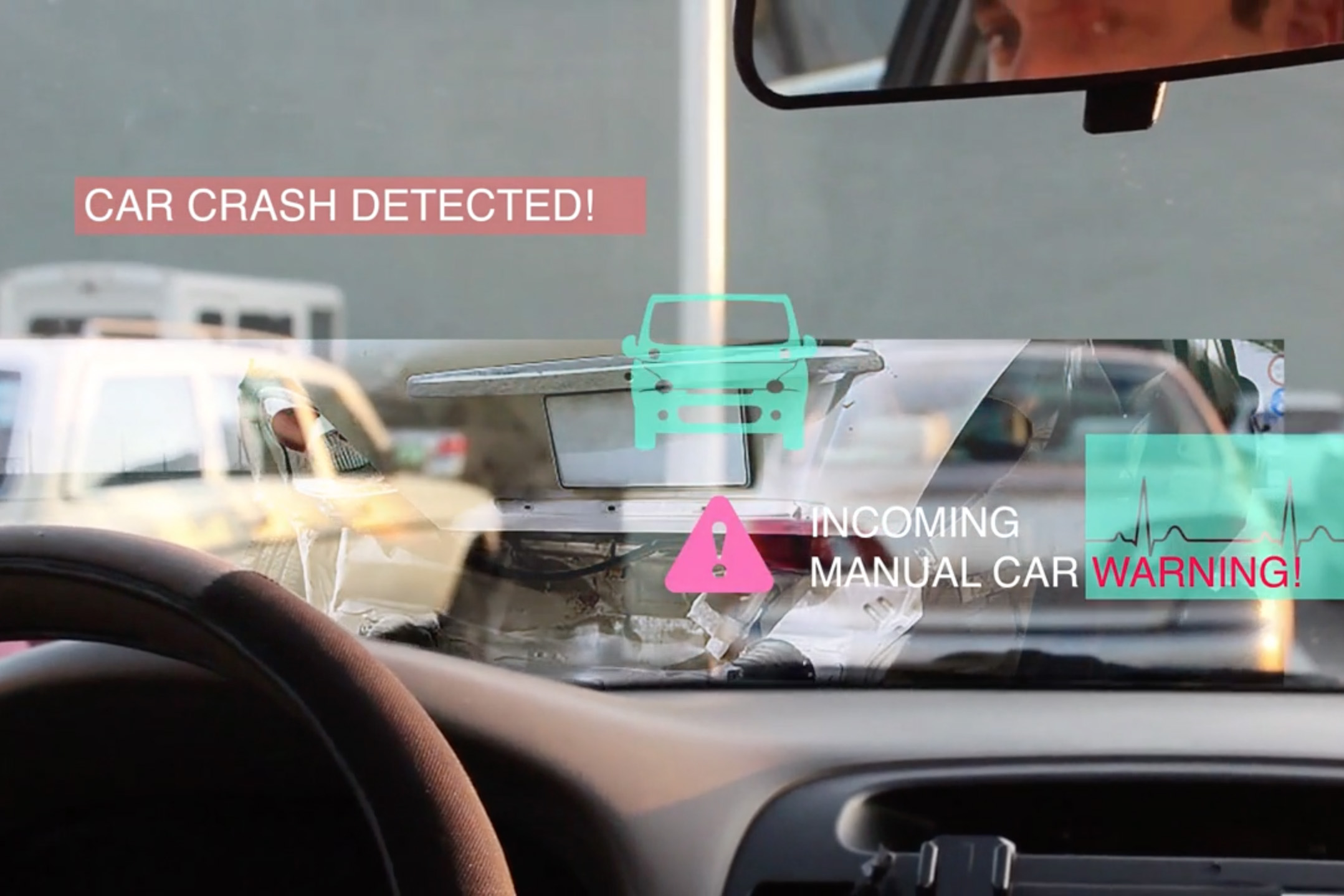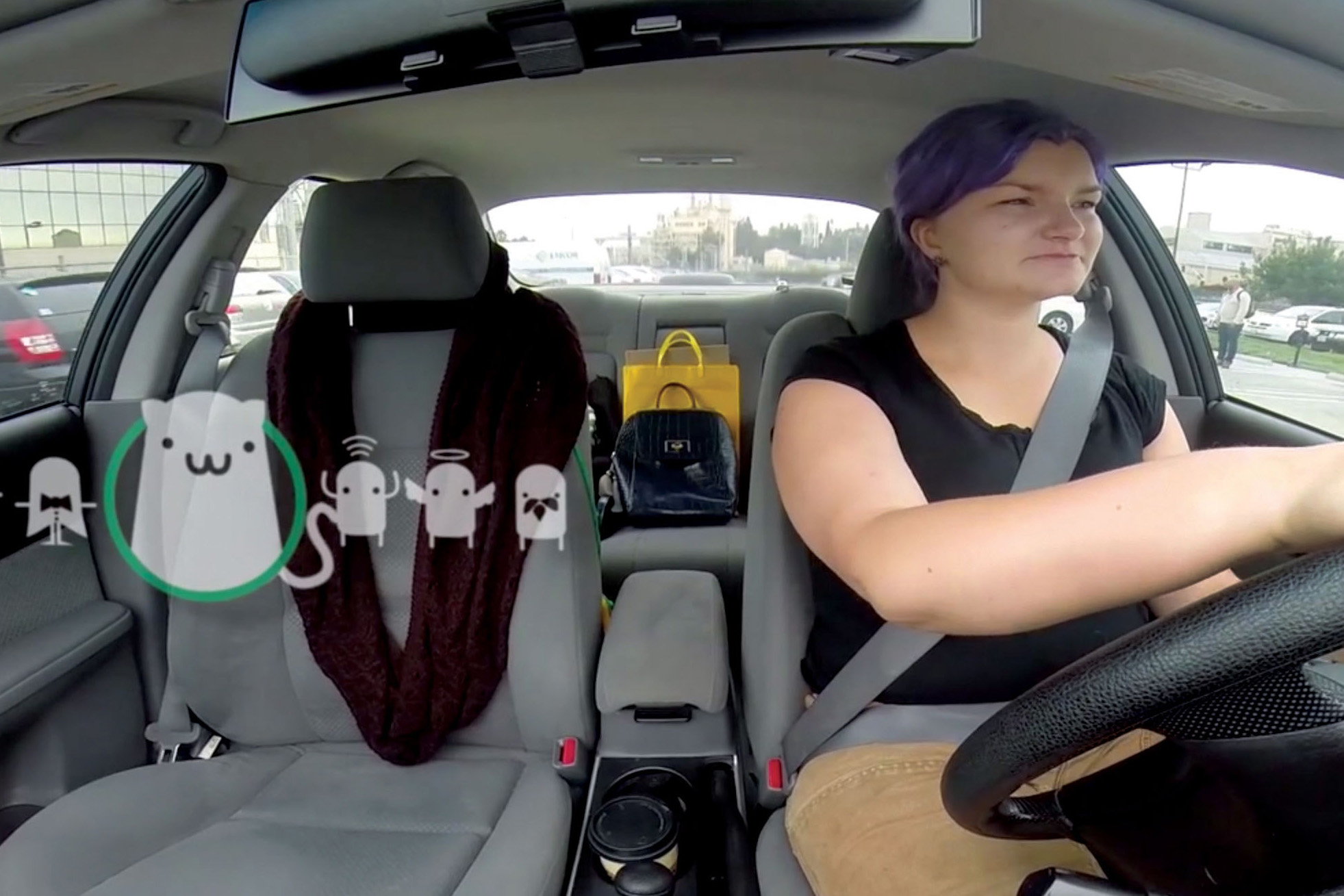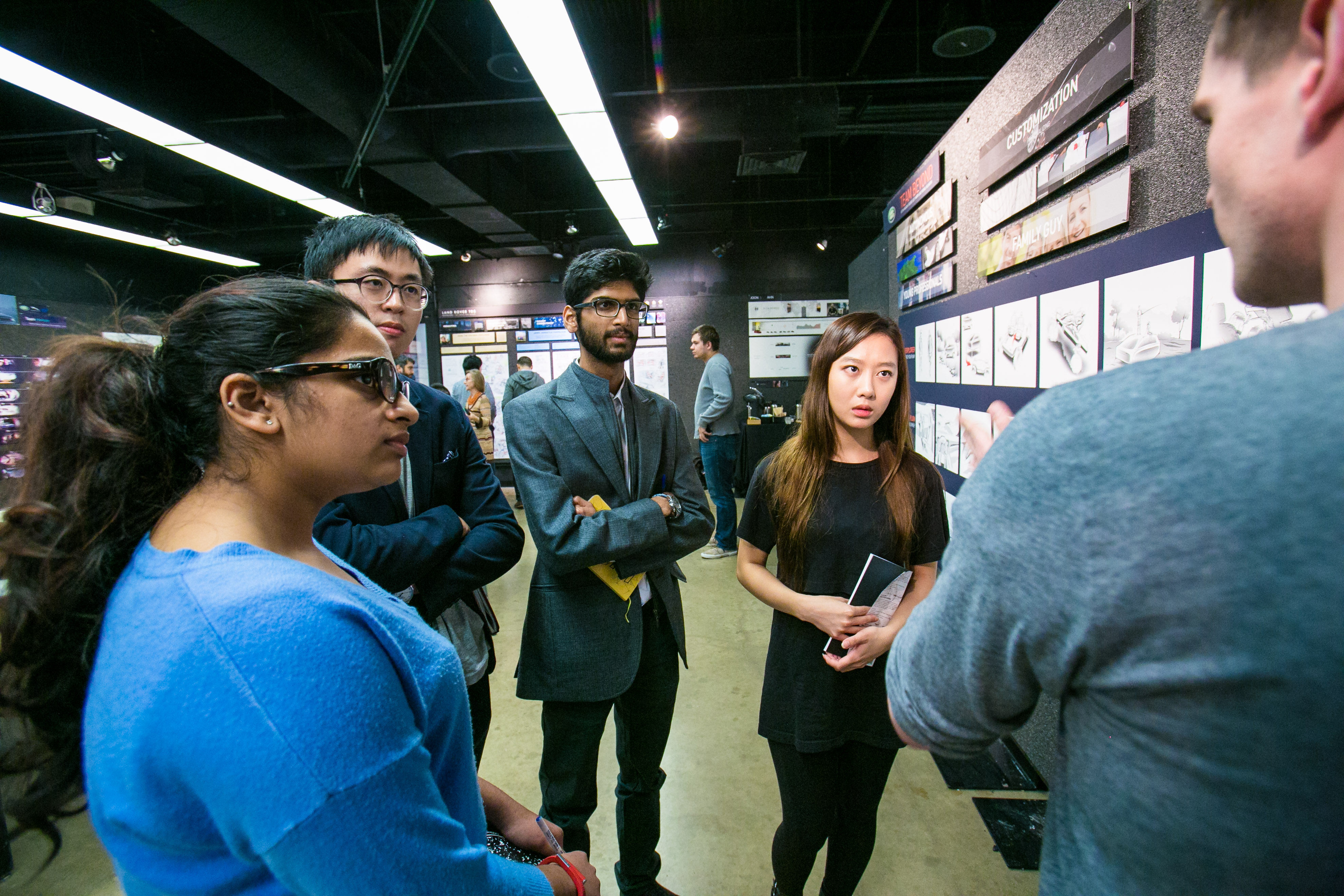
feature / event / alumni / faculty / students / interaction-design / media-design-practices / transportation-design / sponsored-projects
May 20, 2015
Writer: Mike Winder
Future road trip: Autospaces 2025 to explore the changing automotive landscape
It’s the end of the schlep as we know it. And we feel fine.
Well, perhaps not quite yet, but thanks to rapidly evolving technology making autonomous vehicles possible, that daunting commute we face every day may soon be a thing of the past.
Tomorrow in the Wind Tunnel at South Campus, ArtCenter hosts Autospaces 2025, a one-day symposium that brings together designers, researchers, and government and industry leaders to explore issues of connectivity, trust and mediation with autonomous and semi-autonomous vehicles.
Guests scheduled to speak include: Ignacio Alvarez, research scientist at Intel; Edward Fok, transportation technology specialist with the Federal Highway Administration; Matt Jones, technical lead for the next generation of infotainment systems at Jaguar Land Rover; Wendy Ju, executive director for interaction design research at Stanford’s Center for Design Research; Peter Marx, chief technology officer for the city of Los Angeles; Kati Rubinyi, a strategic planning consultant with a focus on sustainable mobility; and David Townsend (BS 91), chief designer for IBM, heading up the company’s analytics platform.
The symposium—part of a year-long engagement with graduate and undergraduate students from Media Design Practices, Interaction Design and Transportation Design, and sponsored by chipmaker Intel and automaker Jaguar Land Rover—aims to better understand the future of automotive experiences through the lens of human-centered design.
Today you can passively sense a person’s heart rate, respiration and emotional state. Imagine what we’ll be able to detect 10 years from now.
John SomozaHigher education program manager at Intel

Last term, Jaguar Land Rover and Intel sponsored New Car Experiences, a transdisciplinary studio in which students from an array of the College’s discipline were tasked with envisioning the Jaguar Land Rover automotive experience for the year 2025. In that Spring 2015 class, students were instructed from the first class session to forget current technological limitations when envisioning their concepts.
“Don’t look at technology as a limitation, think broader,” said John Somoza, higher education program manager at Intel. “Today you can passively sense anything, including a person’s heart rate, respiration and emotional state. That’s just today. Imagine what we’ll be able to detect 10 years from now.”
“Think of how much you’re in contact with the car,” added Paul Wheller, a manager at Jaguar Land Rover’s Portland development team. “You’re touching the steering wheel, sitting on the chair, looking at the floor, touching glass. All those interactions could implement an action.”
Precisely defining those actions? That’s the tricky part.
“Intel can build whatever devices the world needs, but we have to know what those needs are,” Darrell Leblanc, a manager at Intel’s automotive group, told the students. “If we don’t reach out to you, the next generation of designers, then we’re going to guess wrong. We know we want billions of devices out there talking to each other, but what are they going to say?”
Attendees of tomorrow’s symposium will see how students in the New Car Experiences answered that very question.





